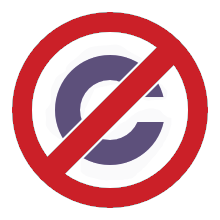Re: August Carnival of Market Anarchy
You say: “Labor Unions, as we know them, are largely the product of politics and pull, and were (at least in theory) implemented as a countervailing force to Big Business.”
Labor unions as we know them are largely the product of politics and pull, but labor unions per se predate the existence of government patronage to unions. In fact, about half the history of the American labor movement (from the founding of the Knights of Labor in 1869 to the passage of the Wagner Act in 1935) was carried out not only without any form of state recognition and privilege, but in fact in the face of massive police, militia and military violence against organizers, strikers, and people who just happened to be in the wrong crowd at the wrong time. During this period, many of the powerful labor unions were much more, not less radical — the Wobblies were resolutely anti-war, pro-immigration, often anarchist, etc. Reason being that the Wagner system was deliberately constructed in order to subsidize bureaucratic conservative unionism as against its radical competitors, and the effects of the World War II command economy, combined with the Taft-Hartley act, was to make heavy-handed government regulation of permissible union goals and union methods the price for the government patronage. (Anti-union libertarians who, rightly, complain about the privileges that government grants to union bosses almost never discuss how closely regulated unions thus “privileged” are.) The purpose was to capture and domesticate a labor movement that the New Dealers viewed as an increasingly dangerous revolutionary force, to convert their bosses into junior partners and their rank-and-file into loyal foot-soldiers in the tripartite planning system of the new corporatist state.
Aahz’s uncritical identification of official, government-recognized unions with “labor unions” just as such, and his erasure of six and a half decades of state-free radical labor organizing, is just vulgar libertarianism running in reverse: the conflation of actually-existing, state-regulated unionism — unions “as we know them” — with unionism per se, followed by an uncritical attack on unions as somehow incompatible with, or unsustainable on, the free market, without stopping to consider whether, just as there might be viable business models for putting capital to use other than corporate capitalism as we know it, there might also be viable organizing models for unionizing workers other than conservative, pro-state unionism as we know it.
 Anticopyright.
Anticopyright.